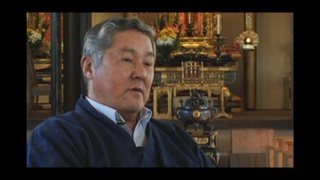Interviews
The kimochi surpasses technique (Spanish)
(Spanish) Even though it is certain that the dance [eisa] is the same all over, in every group we perform the same dances; of course, each group [has] a different theme, and [depending on] the theme of transmission [the dances] have minor differences, the most important [difference] is that each group characterizes itself by something. For example, the branch in Brazil is quite numerous, [it] has many members, [and it] has many local groups within Brazil. The branch in Argentina has a very pure technique. What they have always told us is that the Peruvian branch is characterized by what is known in Japan as kimochi, which is to say the desire to [execute] a performance in the moment of doing it, so much so that at times -- something we need to improve on -- the kimochi surpasses the technique. Therefore, at times, sometimes the dance doesn’t execute as perfect as we had wished, but it is clear that the desire and emotion, as well as the happiness or solemnity that the kids transmit at the moment of their dancing, which makes the people watching able to identify with the dance.
Date: September 14, 2007
Location: Lima, Peru
Interviewer: Harumi Nako
Contributed by: Asociación Peruano Japonesa (APJ)





